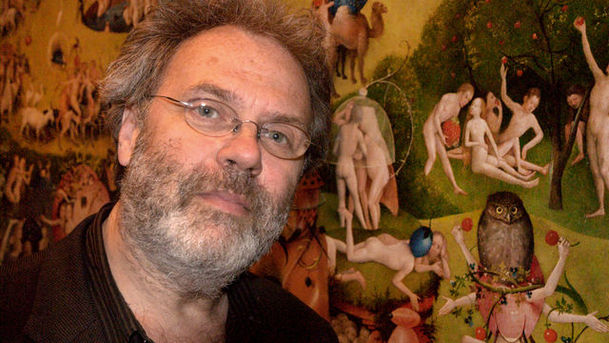Renaissance Revolution - Hieronymus Bosch - The Garden of Earthly Delights

In the second programme of his new series on Renaissance painting, artist and writer Matthew Collings steps into the mysterious invented world of The Garden of Earthly Delights by Hieronymus Bosch, painted c.1505. This imposing work, full of strange and fantastical details, contains one of the most famous images in all of art: a man with a tree for a body, who gazes out at us from the section of the painting representing hell. The tree-man's face is generally thought to be the artist's self-portrait but, like almost everything else about Hieronymus Bosch - including the meaning of this, his most famous painting - no one knows for sure. Using the latest high-resolution digital technology, Matthew Collings is able to explore this extraordinary painting in minute detail and unravel some of the arcane messages that Bosch has woven into it through his use of symbols and unsettling inversions of scale - giant birds drop fruit into the mouths of nude humans, slithering creatures invade paradise, a devil-bird devours a man whole. Just as the images in Bosch's painting were unusual for the Renaissance, his technique was also unconventional for the time. Bosch worked quickly with gloopy blobs of thick paint to conjure up the fine details of a fish's eye or the spines on the back of a porcupine from a few brushstrokes. The liveliness of Bosch's technique is one of the qualities that makes his painting seem strangely modern. The Garden of Earthly Delights reflects the new way of thinking about the world that the Renaissance ushered in - ideas about free will and morality that challenged the old religious order and which posed a question: perhaps heaven and hell are not places your soul might end up in, but states of being that are always inside you?